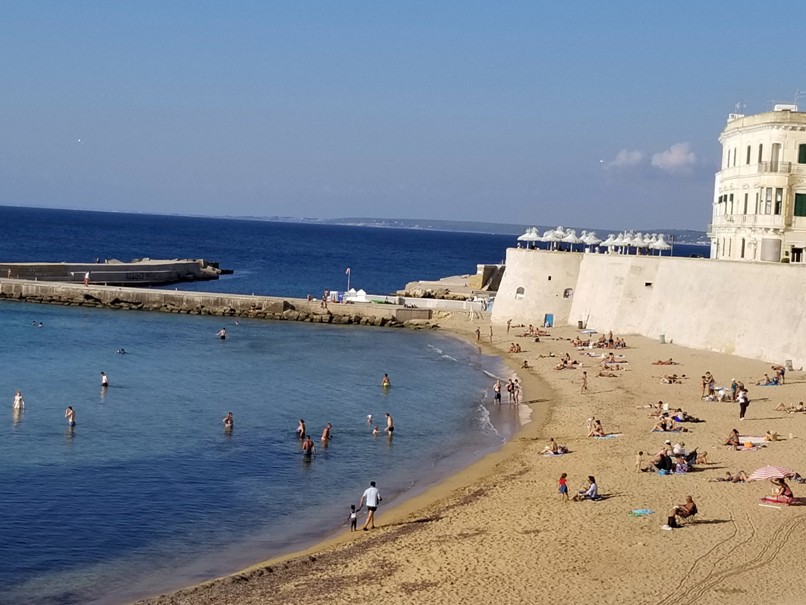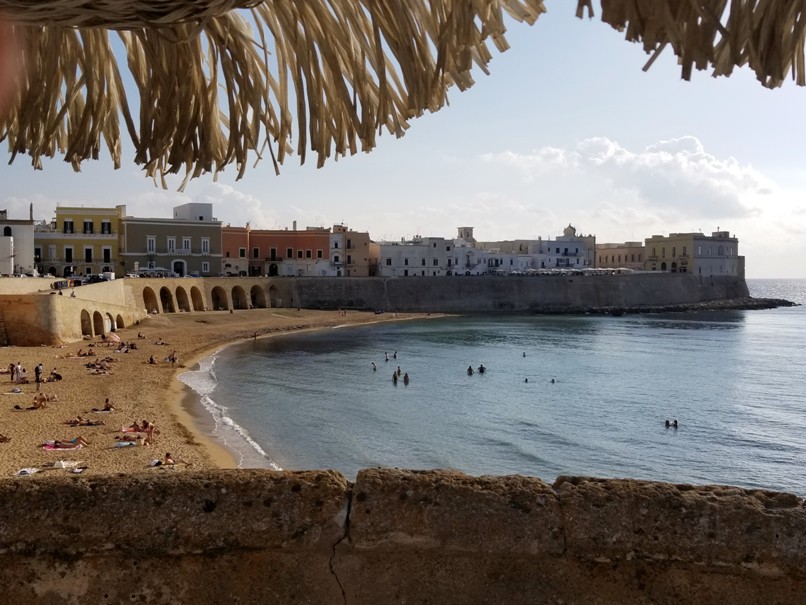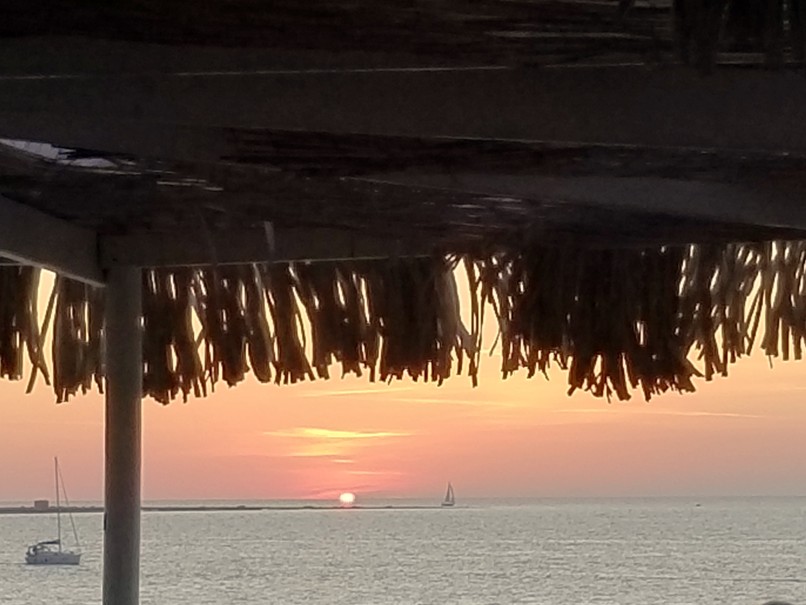Puglia
Gallipoli – The Salento
We drove across the 16th-century bridge that connects the Old Town of Gallipoli to the mainland. Gallipoli sits on a tiny island protected by defensive walls. On its eastern border stands the imposing Castello – a Gallipoli landmark – surrounded by the sea. It has four bulky towers, one on each corner, and a fifth tower, Rivellino, which stands in the water.
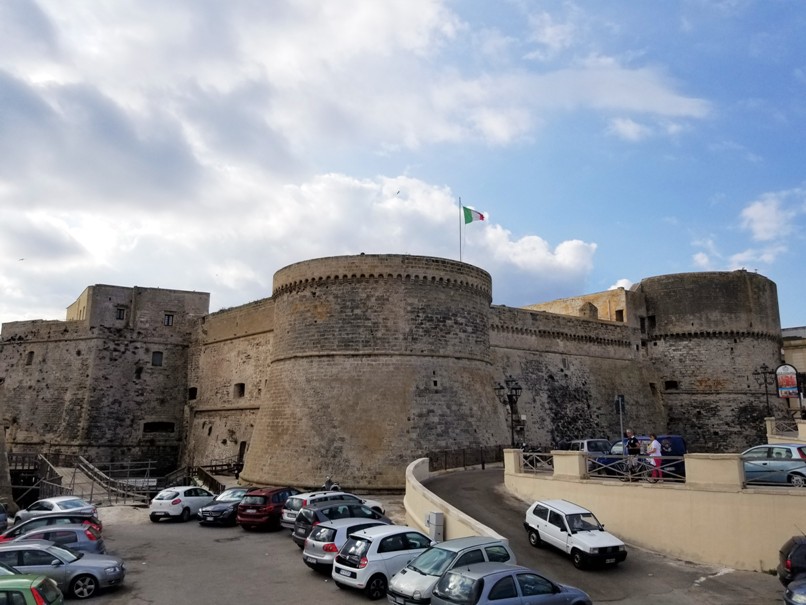
It was late afternoon when we arrived at Hotel Il Pescatore. We snagged a parking spot several feet from the hotel’s entrance on the narrow, one-way street that circles the old town. Finding a parking spot in that area is like finding a pot of gold on your doorstep.
The generous, wide windows of our suite presented us with the gift of an expansive view of the harbor, the new city, and the sun setting over the Ionian Sea, which looked like a sheet of cobalt blue glass.
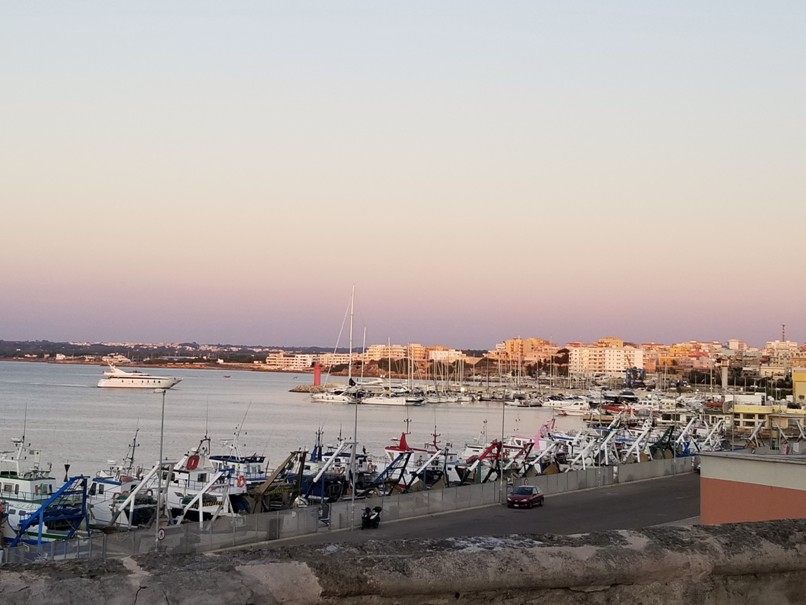
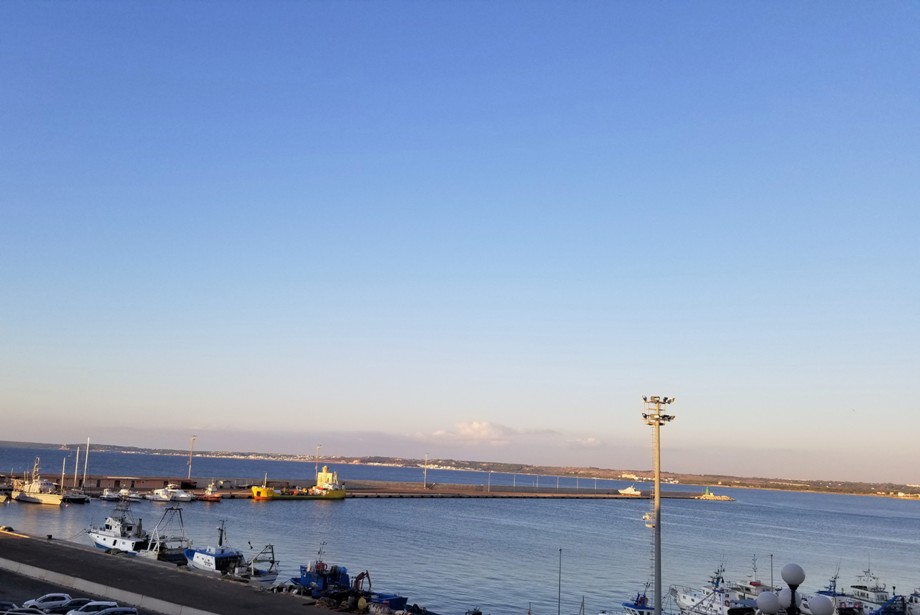
Evenings are a magical time in Italian towns. Locals put chores and work aside and head out for ‘passegiata’ – an outdoor evening stroll, akin to a social ritual. They soak up the beauty of the waning day; sit and chat with friends on outdoor benches; stop at a restaurant or bar for a glass of vino and antipasti. It’s a fabulous way to decompress and end one’s day.
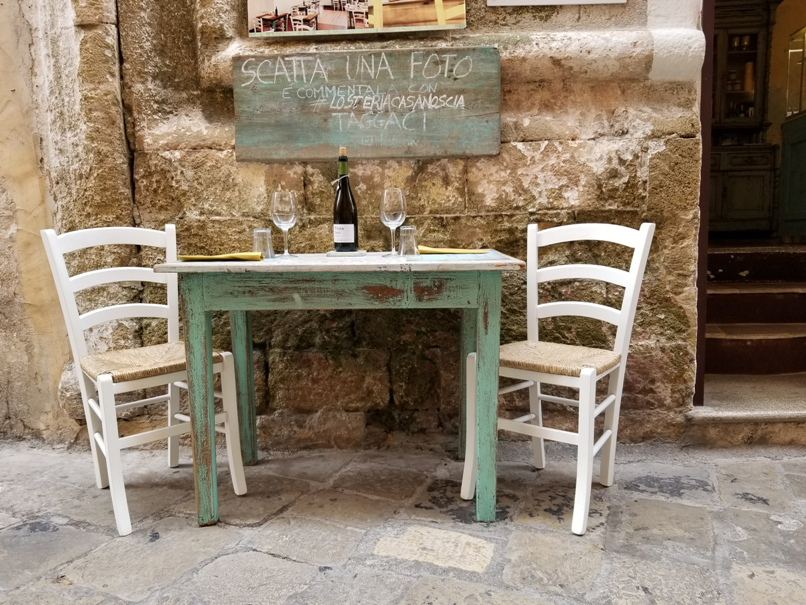
We joined the ‘passegiata.’ Strolled along the tiny sidewalk that clings to the edge of the narrow ring road and stopped to pay a visit to Chiesa di Santa Maria della Purita. It’s cozy and intimate and covered from floor to ceiling with sumptuous baroque art, while the floors are decorated in richly patterned 18th and 19th century majolica tiles. I loved the contrast of the magnificent interior of the church with the laid-back scene outside the open door: due amici relaxing on the sidewalk and watching the traffic and pedestrians pass by.
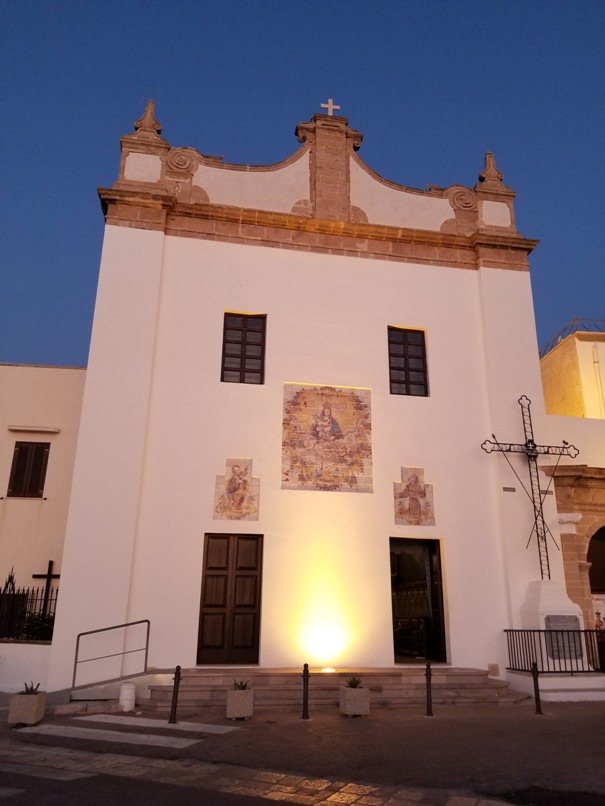
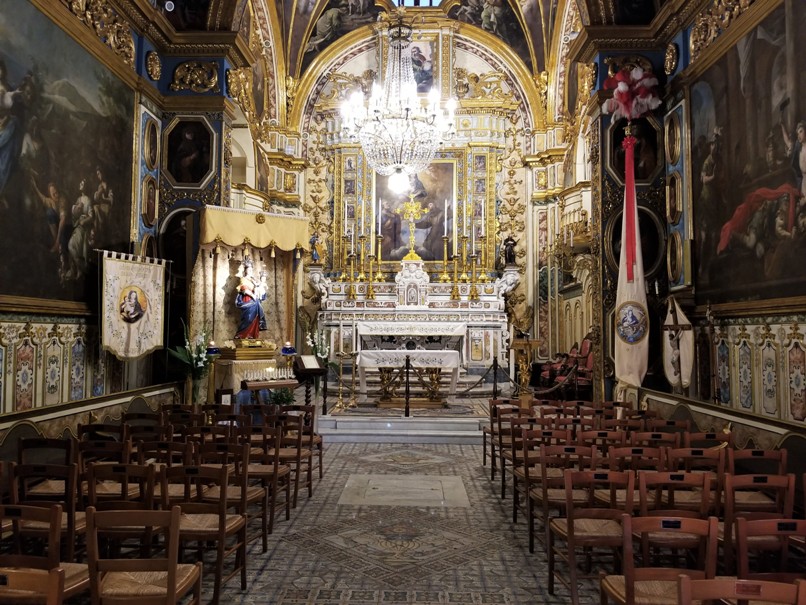
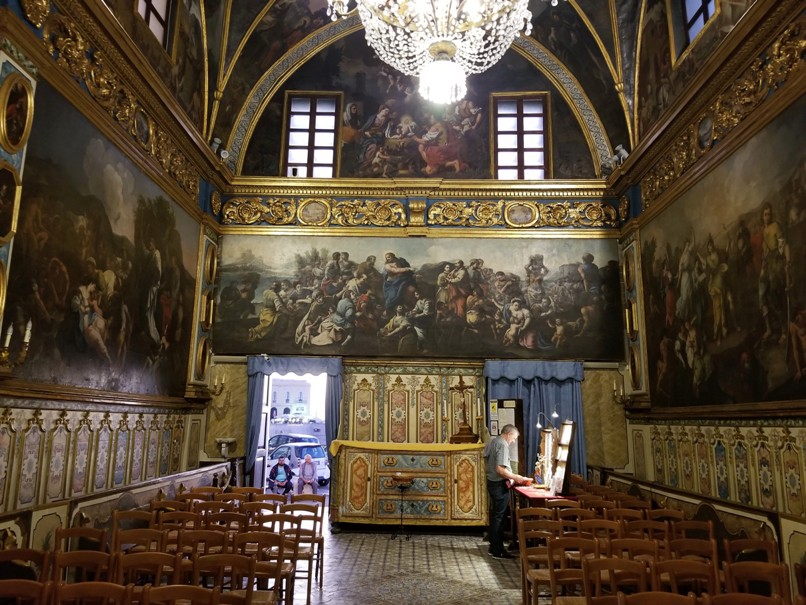
A few steps farther, we came across a basilica where a Saturday evening service was underway. The simplicity of the unadorned textured walls and ceilings created a soothing and welcoming aura, with minimal visual distractions.
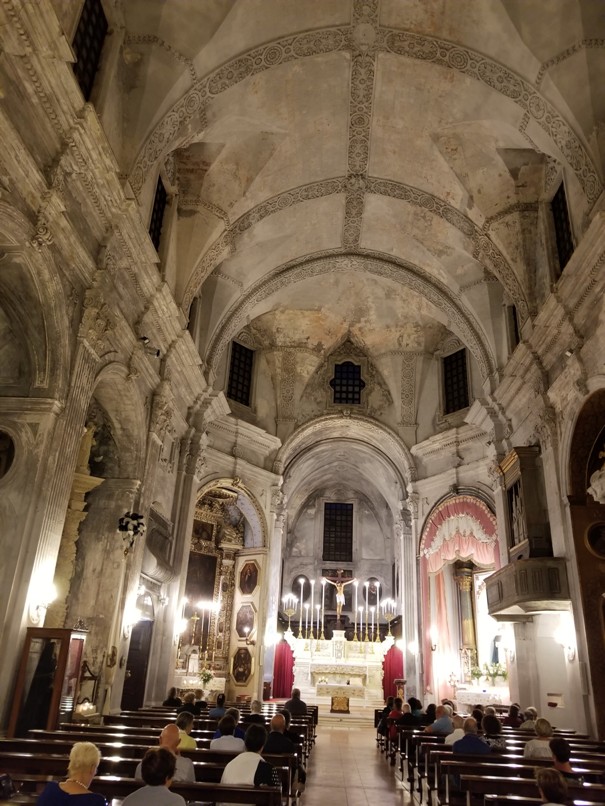
Sunday morning, and the smell of fresh fish led us to the fish market below the ring-road. Fishermen and buyers were haggling in animated Italian style: hands waving, fingers wagging, their entire being engaged in the process of negotiating the sale.
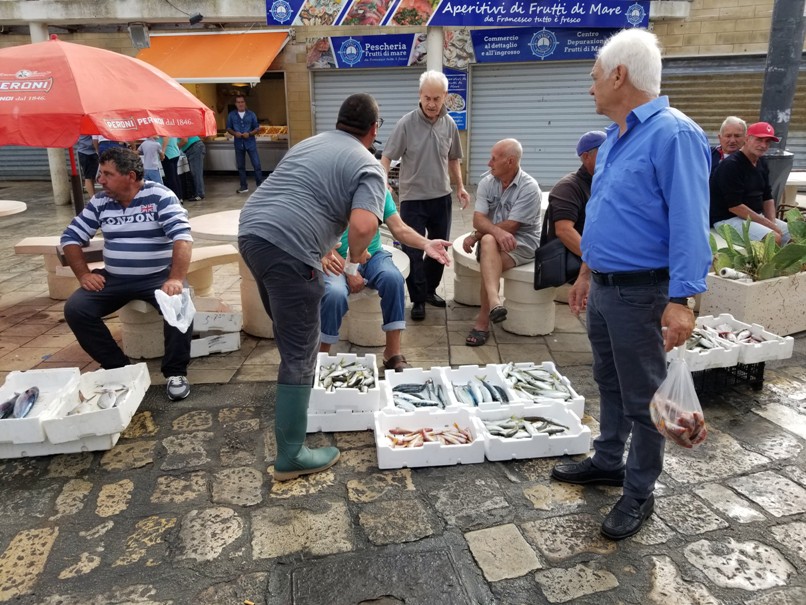
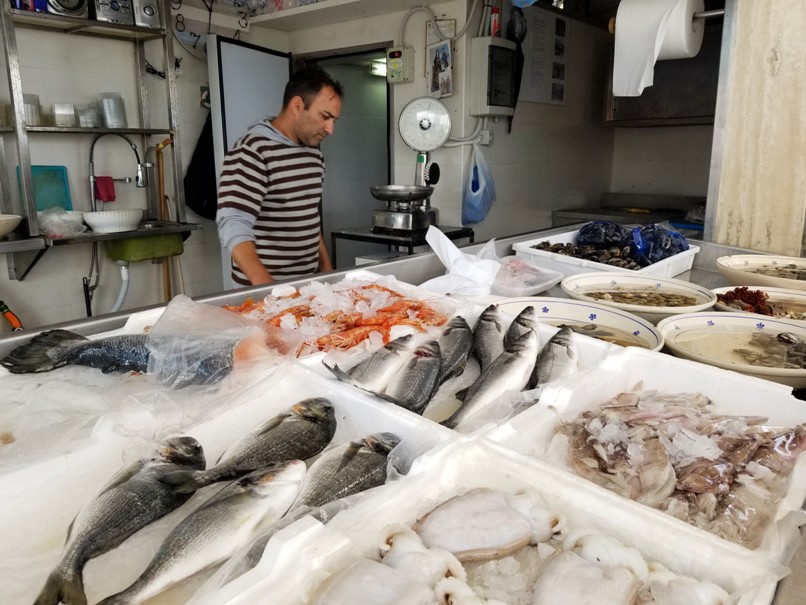
A walk across the bridge – Ponte Seicentesco – delivers a perfect view of the bridge, the fishermen tending their nets, and the Castello surrounded by the sea.
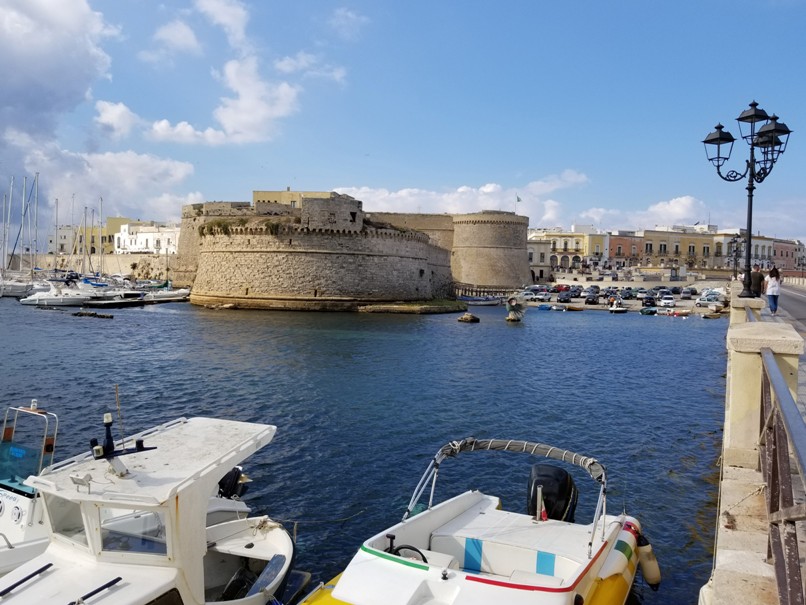
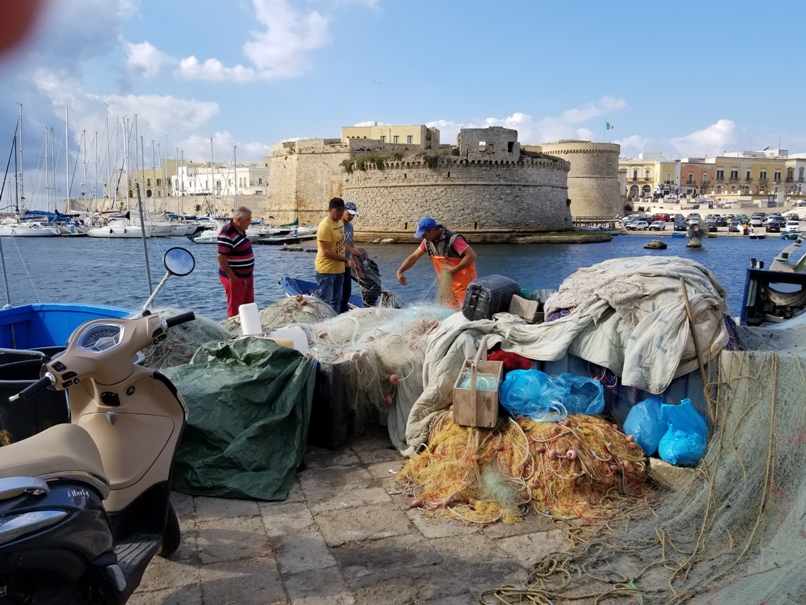
By sheer chance, I took this photo of a fisherman working his nets and later that day, took a photo of an old photo, on display in the museum. The nets have changed, the style of the fishermen’s caps has changed, but the posture, pose, and concentration on the work at hand, have not.
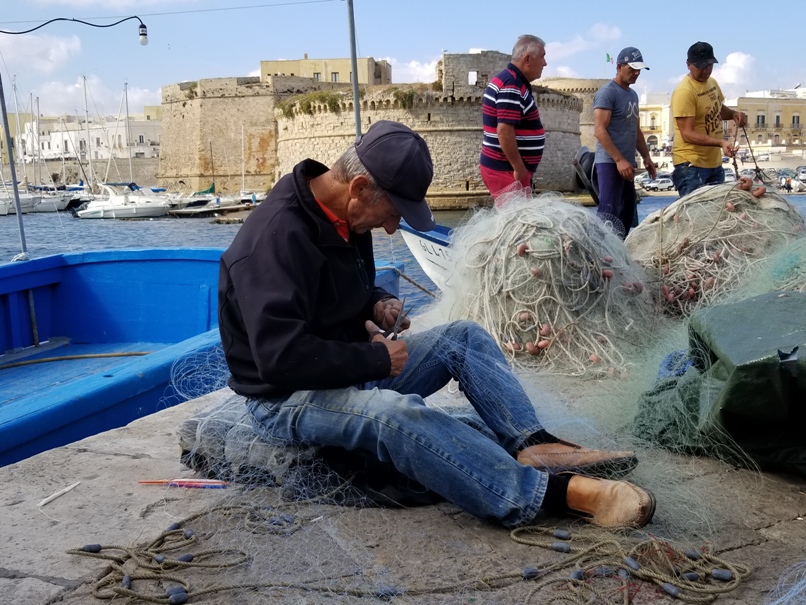
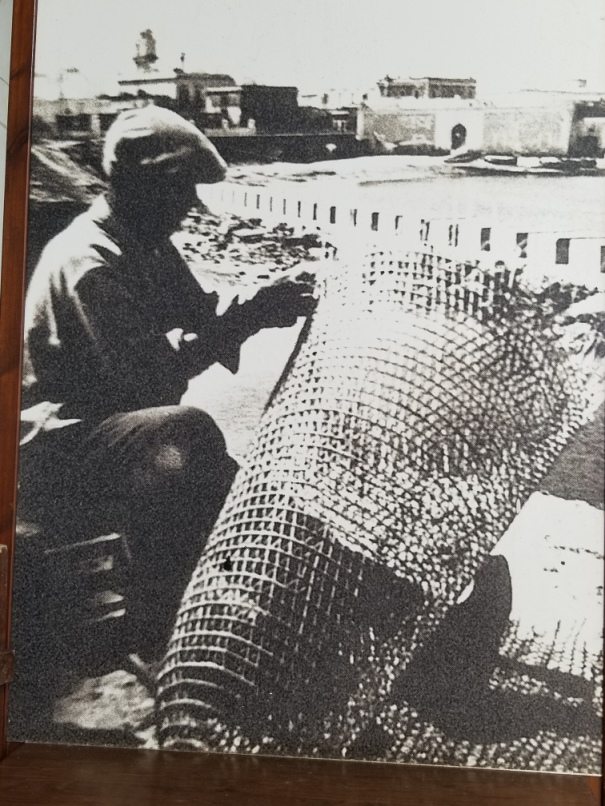
The cobbled pedestrian lanes of Gallipoli brim with life and color, charming nooks and crannies, and restaurants where the fresh seafood and pasta is superb.
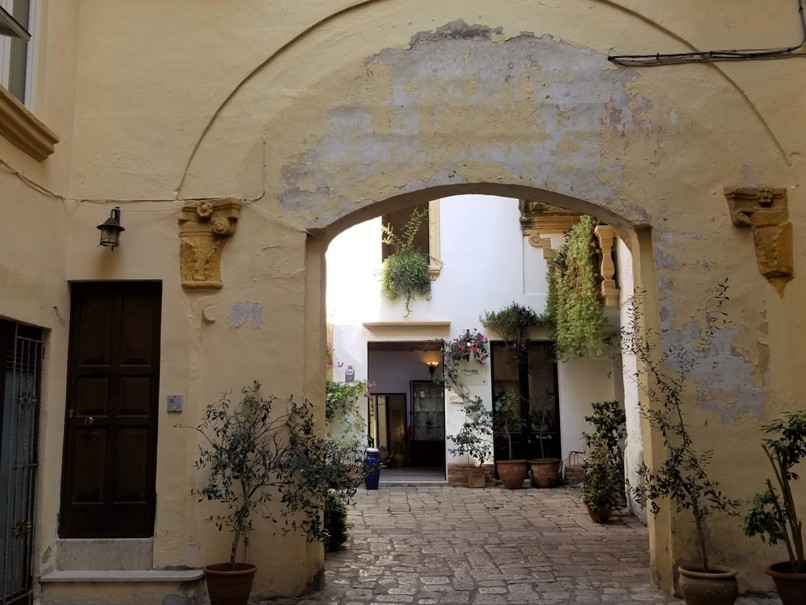
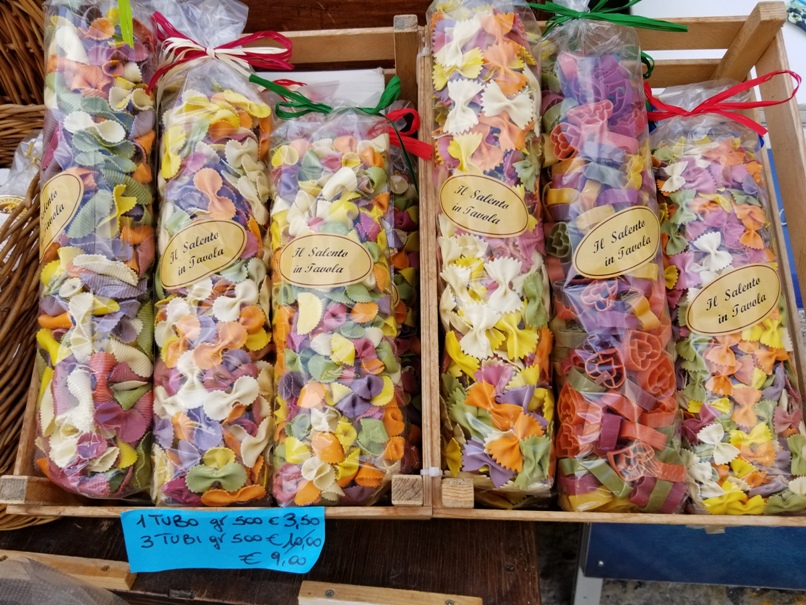
In the heart of Old Town, wedged between buildings, is Gallipoli’s most famous church, both from a religious and an artistic standpoint. Basilica Cattedrale di Sant’Agato was built in the early 17thcentury in the baroque style on the site of a destroyed medieval church. Its façade is adorned with elaborate Lecce stone sculptures, the interior is rich in art by local artists, and the cathedral houses the relics of several saints. We were fortunate that our visit coincided with the baptismal ceremony of an infant, which made this imposing baroque cathedral feel warm and intimate.

The old underground oil presses that populate the small towns of Puglia are fascinating. Frantoio del Vicerѐ oil press is one of 35 oil presses mentioned in the 1809 land registry records, and there are believed to be hundreds of underground cisterns on the island of Gallipoli yet to be uncovered. The oil presses, which were dug out of the rock deep below ground, needed to have a constant temperature of between 18-20 degrees Celsius (64.5-68 degrees Fahrenheit), be moist, and have their own spring well, which means that finding an ideal underground location was no simple task.
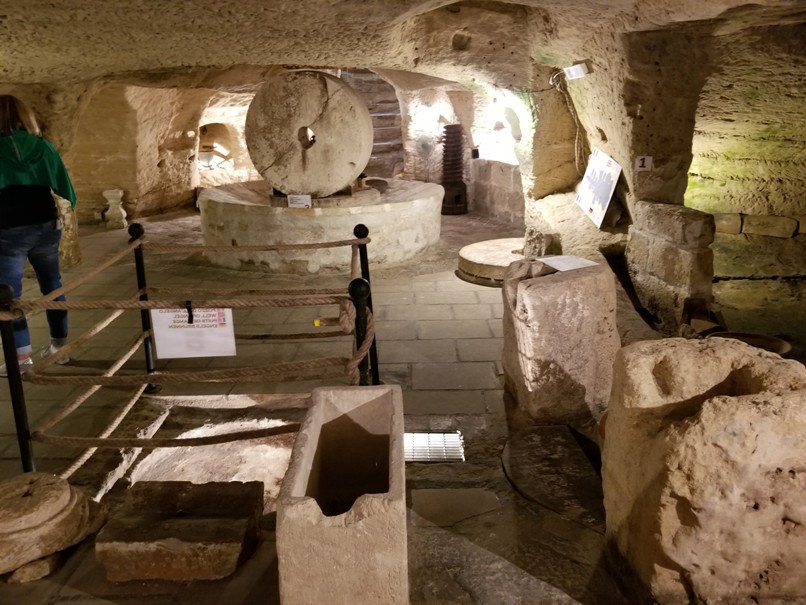
The production of olive oil ‘L’oro Liquido’ (liquid gold) was a collaboration between a blindfolded donkey or horse, who walked in circles for hours turning the millstone, and man. Working conditions were harsh, unhygienic, and involved excessively long hours.
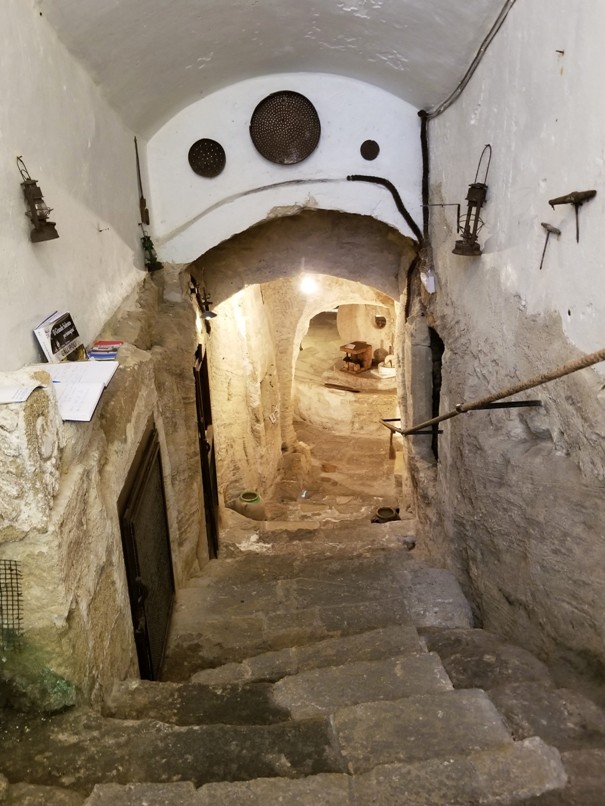
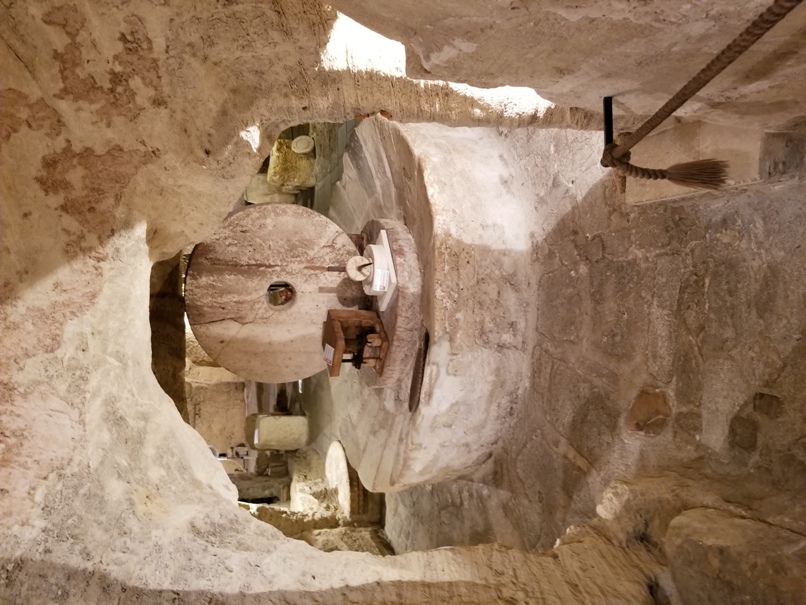
The beaches of Gallipoli – with their warm, tranquil, transparent waters – are irresistible. We spent a relaxing afternoon lazing on the beach and taking long swims. As evening approached, we ambled up the steps to the bar/café above Spiaggia della Purita – Purity Beach, where we sat under one of the white umbrellas with a glass of wine in hand and a platter of antipasti, and watched the gentle sunshine bathe Gallipoli in gold.
